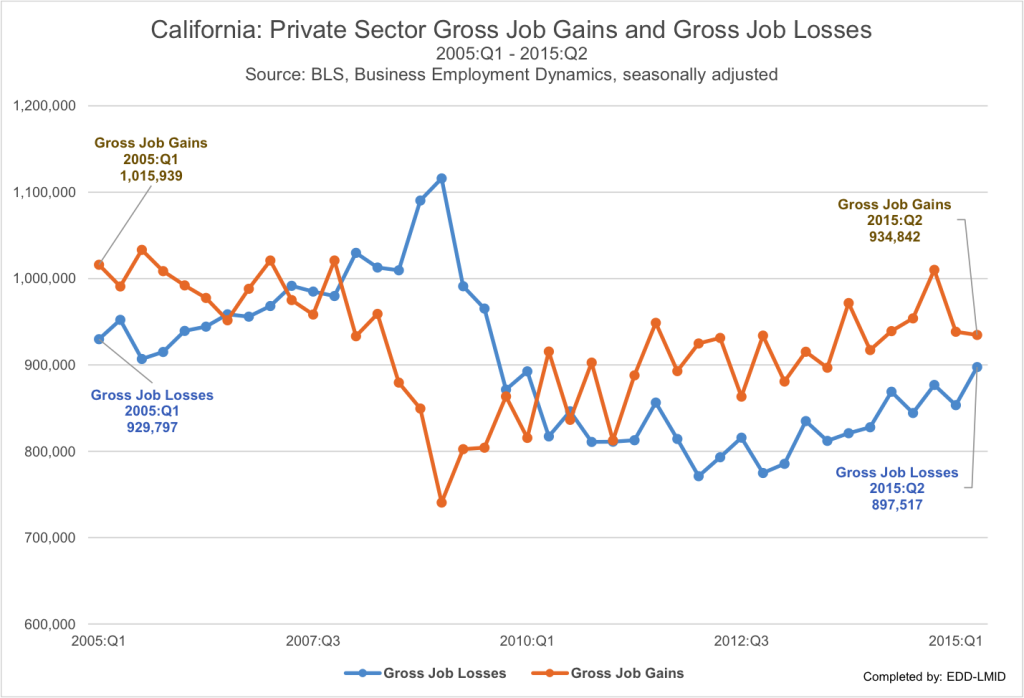 A continuing storyline of the California economy is the enormous job creation and job destruction that goes on below the surface of the monthly job numbers. Each month around 300,000 payroll jobs are destroyed, and an equal amount created, even as the monthly payroll job total moves only a little.
A continuing storyline of the California economy is the enormous job creation and job destruction that goes on below the surface of the monthly job numbers. Each month around 300,000 payroll jobs are destroyed, and an equal amount created, even as the monthly payroll job total moves only a little.
It’s been a few years since we last looked in detail at the data on job creation and destruction in our state. As the California economy continues to hum along (now with over 2 million payroll jobs gained since February 2010), it is time to revisit the job creation/destruction machine that is California.
As with we do with other data investigations, let’s bring in Brandon Hooker of the Labor Market Information Division of the state Employment Development Department. The chart above forwarded by Mr. Hooker (click to enlarge) tracks private sector job gains and losses by quarter, from the first quarter of 2005 to the second quarter of 2015, the latest quarter for which data are available. The data are from the Business Employment Dynamics (BED) series, which measures net changes in employment at the establishment level.
What should we note? Three employment dynamics stand out, that may surprise human workforce and employment professionals in our state:
- Even when the economy is in a downturn, as during the Great Recession, there is enormous job creation occurring. At the depth of the Great Recession in 2008-2009 in California, over 250,000 jobs were being created each month.
- Conversely, even when the economy is going strong, as in 2014 and 2015 in California, there is enormous job destruction each month. In the second quarter of 2015, for example, even as the unemployment rate was steadily declining and the total payroll job number was steadily rising, an average of nearly 300,000 jobs were destroyed each month.
- The enormous job creation/destruction in California that we see in recent years is actually lower than in the early years of 2000. We often see the California employment world as speeding faster and faster, propelled by technology, particularly the internet economy. However, the quarterly job gains and job losses in recent years on average were below those of earlier years in the 2000s.
Quarterly job gains reached their high of 1,070,808 in June 1999, and by June 2005 were still at 958,792. In the second quarter of 2015, quarterly job gains stood at 934,842. This was a strong rebound fom a low of 762,554 in June 2009, but no improvement on earlier years.
The chart below, forwarded by Mr. Hooker, shows the annual average gross job gains by industry sector in 2005 and in 2014. In the majority of sectors, the annual job gain number was higher in 2005 than in 2014.

Why the pace of job creation/destruction has declined in California is not clear, when so much of the economy seems to have accelerated in pace. It may be the lingering impacts of the Great Recession in leading potential entrepreneurs to be more cautious in starting businesses. It may be these same lingering impacts in leading employers to be cautious in adding workers.
Most likely it is a mix of these factors as well as the others we have discussed in previous posts that are pushing employers away from hiring employees and toward independent contracting.

